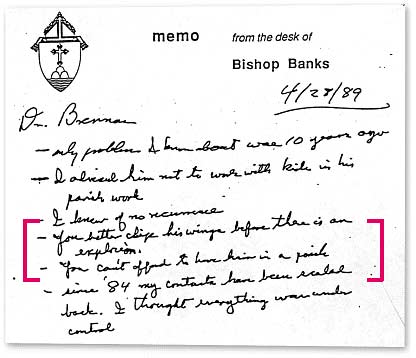That 1985-2002 clergy-abuse gap (revisited)
 As a rule, your GetReligionistas think that veteran religion-beat specialists do a consistently better job of getting the basic facts right, especially when their work is compared with general-assignment reporters who are shipped off to cover complicated stories that often have years, decades or centuries of past history. At the top of the list of scribes whose work we frequently admire is Tim Townsend of The St. Louis Post-Dispatch. The man is a pro.
As a rule, your GetReligionistas think that veteran religion-beat specialists do a consistently better job of getting the basic facts right, especially when their work is compared with general-assignment reporters who are shipped off to cover complicated stories that often have years, decades or centuries of past history. At the top of the list of scribes whose work we frequently admire is Tim Townsend of The St. Louis Post-Dispatch. The man is a pro.
All of which makes we wonder if an editor or two monkeyed around with the top of the following story about the early work at the latest meeting of the U.S. Catholic bishops. Pay close attention and think "history."
ATLANTA -- The U.S. Catholic bishops who gathered here for their annual spring meeting spent Wednesday morning grappling with the sins of the past, marking the 10th anniversary of the clergy sex abuse crisis that crippled the church. ...
In June 2002, the bishops met in Dallas as the abuse scandal, which first erupted in Boston, was raging across the country.
The crisis began in 2002? That will be a shock to religion-beat veterans who have been covering the crisis since the mid-1980s, complete with magazine cover stories, a major book or two and even a made for television movie about one spectacular case that gripped the nation.
This brings us to Father Gilbert Gauthe and the following 1985 quotation from Time magazine (which I have quoted before):
Father Gilbert Gauthe, a Roman Catholic priest, delivered spellbinding funeral sermons, won local respect by rescuing a man who was trapped under an overturned tractor, and impressed many older women with his charm in Louisiana’s Vermilion Parish. But most of all, he was a Pied Piper for the children. He would take them on wilderness trips, play games and invite favored boys to spend the weekend in the rectory.
You know where that story is going to go.
Here's the key: The Gauthe case was not the first. It was the case that lept into the national headlines, the first of many in the era between 1985 and 2002.
In other words, the public crisis began back then. The Boston furor in 2002 led to increased legal actions and more episcopal action on this issue IN PUBLIC, as opposed to behind closed doors. However, regional and even national press coverage of this hellish issue has roared to life several times since 1985.
In short, if the crisis is primarily about lawyers, it's possible to say that it kicked into a higher gear in 2002.
If the crisis is primarily about children, about victims, then the crisis began in the 1980s and earlier.
Later in this story, readers are told the following about the board that the bishops finally created to work on this issue:
In a progress report released to the bishops ... the National Review Board said that a decade after the crisis, "there has been striking improvement in the Church's response to and treatment of victims." But it also acknowledged that "much work still needs to be done."
The board said in its report that in the past 10 years more than 15,000 victims of clergy sexual abuse had come forward. More told their stories each year. The incidences of abuse, it said, began to rise in the 1960s, peaked in the 1970s and declined sharply in the 1980s.
I guess one needs to ask: What is the nature of the crisis? The headlines began nearly three decades ago. The actual abuse raged for years before that.
To understand this story, readers need to know that public debate and news coverage about this crisis began in 1985. Period. That's the date that reporters should use to start this timeline. That's the size of this crisis.